Latest posts by (see all)
- The Best Things to Do in Tulsa - June 26, 2020
- The Most Interesting Things to Do in Springfield Mo - June 15, 2020
- Best Things to Do in Salt Lake City - May 26, 2020
- 10 Best Websites for Playing Online Games - May 22, 2020
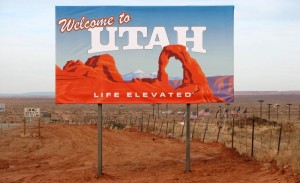 Utah is known for its ancient and unique landscapes. Canyons and mountain slopes of Utah are the oldest in North America. There are many beautiful and picturesque places to visit in Utah, not deprived of the attention of tourists. For example, in the north-east of the state there is one such place – the picturesque Bryce Canyon. The main distinguishing feature of the local landscape is a wide color range of canyons from a rich bright orange to a whitish light yellow. Visiting Utah you are going to see a lot of great sights created by Nature.
Utah is known for its ancient and unique landscapes. Canyons and mountain slopes of Utah are the oldest in North America. There are many beautiful and picturesque places to visit in Utah, not deprived of the attention of tourists. For example, in the north-east of the state there is one such place – the picturesque Bryce Canyon. The main distinguishing feature of the local landscape is a wide color range of canyons from a rich bright orange to a whitish light yellow. Visiting Utah you are going to see a lot of great sights created by Nature.
Contents
- Place to visit number 1: Bryce Canyon National Park
- Place to visit number 2: The National Park of Arches
- Place to visit number 3: Monument Valley
- Place to visit number 4: Capitol Reef National Park
- Place to visit number 5: Goblin Valley
- Place to visit number 6: The Zion National Park
- Place to visit number 7: The Natural Bridges National Park
- Place to visit number 8: Theater Tower
- Place to visit number 9: Dead Horse Point State Park
- Place to visit number 10: The Black Dragon Canyon
- Place to visit number 11: Park City
- Place to visit number 12: Salt Lake Assembly Hall
- Place to visit number 13: Kanab
- Place to visit number 14: The Dixie National Forest
- Place to visit number 15: The Museum of Fine Arts
- Video
Place to visit number 1: Bryce Canyon National Park
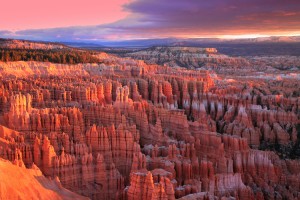 Bryce Canyon National Park is located in the northeast of Utah. It is one of the largest and most beautiful natural monuments in the United States. However, in reality, this is not a canyon, but a huge natural amphitheater of sharp rock peaks, painted in various shades ranging from pink to orange.
Bryce Canyon National Park is located in the northeast of Utah. It is one of the largest and most beautiful natural monuments in the United States. However, in reality, this is not a canyon, but a huge natural amphitheater of sharp rock peaks, painted in various shades ranging from pink to orange.
Bryce, unlike its neighbors (the Grand Canyon and Zion), does not enjoy great popularity. Mainly, this is due to the relative remoteness of the park. But usually visiting all these three parks is combined in one trip.
Interesting facts about the canyon:
- The name Bryce Canyon was given in honor of the Mormon settler, Ebenezer Bryce, who settled in 1875 on the upper edge of the canyon.
- However, after the canyon was given the status of National Park in 1924, it was named the Utah National Park.
- But at the beginning of the 20th century a decision was made to pay tribute to the first settlers of the Wild West, and the Park was renamed.
The area of the Bryce Canyon Park is 56 square miles (or 145 square kilometers). The height of its edges varies from 2400 to 2700 meters.
Interesting: It is best to visit it at dawn or sunset, when the sun’s rays emphasize the bizarre natural forms.
Back
Place to visit number 2: The National Park of Arches
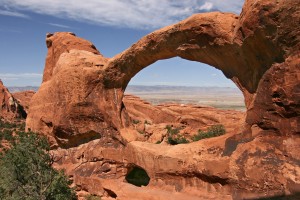 The National Park of Arches is famous for its amazing natural arches of various sizes and colors. In total, there are more than 2000 on the territory of the park. When you see the panorama of the sky and surrounding hills, which is visible
The National Park of Arches is famous for its amazing natural arches of various sizes and colors. In total, there are more than 2000 on the territory of the park. When you see the panorama of the sky and surrounding hills, which is visible
through the arches, there is a fascinating sensation of an amazing alien landscape, as if the Almighty himself created this beauty in a natural workshop. The total area of the park is 309 square km. The highest point is located at an altitude of 1,723 m, the lowest point is 1,245. These unusual natural formations appeared almost 150 million years ago.
As for the entertainment in the park, climbing the arches is prohibited by the rules of the park, as they are destroyed from erosion and climbing can be quite dangerous. But even without climbing, tourists can enjoy a variety of activities, such as:
- walking and car routes,
- cycling,
- ranger programs.
Interesting: Astronomical observations are very popular in this place.
Back
Place to visit number 3: Monument Valley
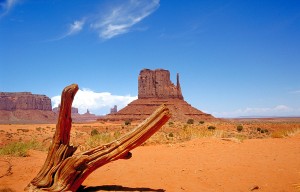 Monument Valley is one of the national symbols of the United States, which is truly a unique geological formation worthy of being included in the list of wonders of the world.
Monument Valley is one of the national symbols of the United States, which is truly a unique geological formation worthy of being included in the list of wonders of the world.
Here there is a stretch of the border between the states of Utah and Arizona, and the territory of the national park refers to the reservation of the Indian tribe Navajo. Surprisingly beautiful landscapes of the valley have inspired many directors a lot of times, and they are familiar to everyone in the frames of famous films.
Interesting facts to know:
- Millions of years ago, on the place where the desert now stretches, the Mesozoic sea splashed.
- The sandstone beds were deposited at the bottom and gradually the sea receded due to the rise of the earth’s crust, and in its place a vast plateau was formed.
- For many millennia, rains, wind and frost worked on rocks, and as a result, majestic and at the same time bizarre towers and columns appeared.
Almost until the end of the XIX century, this amazing corner of nature was accessible only to the views of the militant Navajo tribe.
Nowadays you can see the beauty of the Valley of Monuments right from the window of the car. But still, in order to experience a really strong sensation, it is worth climbing one of the rocky remnants.
Interesting: The landscape that will open to the traveler will impress to the depths of his soul with its unearthly beauty.
Back
Place to visit number 4: Capitol Reef National Park
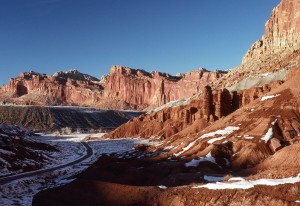 Capitol Reef, which laid the foundation for a future national park, is located in the south of central Utah, near the Fremont River. This unusual corner of nature consists of white sandstone cliffs, in a form reminiscent of the Capitol, in which the US Congress is. These rock formations were formed due to deformations of the earth’s crust, which occurred almost 65 million years ago.
Capitol Reef, which laid the foundation for a future national park, is located in the south of central Utah, near the Fremont River. This unusual corner of nature consists of white sandstone cliffs, in a form reminiscent of the Capitol, in which the US Congress is. These rock formations were formed due to deformations of the earth’s crust, which occurred almost 65 million years ago.
For visitors of the National Park, numerous routes have been developed, which allow you to go hiking or horseback riding, and have the opportunity to travel by car. The animal world in the park is diverse enough – it inhabits:
- badgers,
- squirrels,
- wolves,
- shrews,
- bats,
- foxes,
- skunks and marmots,
- as well as dangerous mountain lions.
But do not panic, because every tourist before going on a hike, passes mandatory instruction. And indeed, picturesque canyons, mountain ranges, rocky outcrops and monoliths cannot leave anyone indifferent and make a strong impression on travelers.
Interesting: This is one of the most popular places among tourists, in the 20-ies of the twentieth century was called “Wonderland of Wayne.”
Back
Place to visit number 5: Goblin Valley
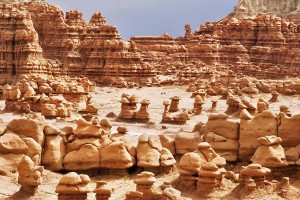 State Park Goblin Valley is an amazing world of stones. Here there are thousands of rocks of the most bizarre outlines, reaching several meters in height. These fantastic and unique natural sculptures, reminiscent of fabulous goblins, were
State Park Goblin Valley is an amazing world of stones. Here there are thousands of rocks of the most bizarre outlines, reaching several meters in height. These fantastic and unique natural sculptures, reminiscent of fabulous goblins, were
formed as a result of the work of wind, sun and water and amaze the imagination of anyone who came here.
This park is a real paradise for a photographer.
Some historical facts about Goblin Valley:
- For the first time, the Valley of the Goblins was discovered by cowboys, who went in search of cows who fought off the herd.
- Then, at the beginning of the twentieth century, a businessman named Arthur Chaffin and his business partners went to find new interesting routes.
- During this expedition they came to a place that was located about a mile from the Goblin valley and found here five huge stone “bottles” and a lot of very strange rocks.
- Chaffin called the site “Goblin Gorge” and returned here in 1949 to explore the mysterious valley and film it.
After the photos were published, a powerful advertising campaign began, and gradually the tourists were drawn to the valley. Several routes were laid along which excursions are still available.
Interesting: In order to protect the Goblin Valley from vandalism, the state authorities of Utah in 1954 gave it the official status of a national reserve.
Back
Place to visit number 6: The Zion National Park
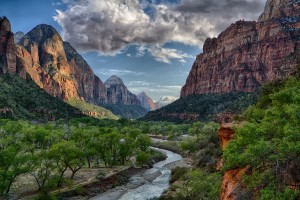 The Zion National Park is located in Utah, near the city of Springdale. The total area of the park is 593 square km. The main attraction of the park is the 24-kilometer Zion Canyon, on which behalf the name of the park takes place. The depth of the canyon reaches 800 meters. It was formed as a result of a wash of reddish and bronze shades in the sandstone waters of the Virginia River. The canyon was discovered in the 1860s by Mormons, which gave it the name in honor of Mount Zion, but more or less thoroughly studied only in 1872.
The Zion National Park is located in Utah, near the city of Springdale. The total area of the park is 593 square km. The main attraction of the park is the 24-kilometer Zion Canyon, on which behalf the name of the park takes place. The depth of the canyon reaches 800 meters. It was formed as a result of a wash of reddish and bronze shades in the sandstone waters of the Virginia River. The canyon was discovered in the 1860s by Mormons, which gave it the name in honor of Mount Zion, but more or less thoroughly studied only in 1872.
Status of the national park area around the canyon was in 1919. On the territory of the National Park there is an amazing collection of unusual rock formations from the Navajo sandstone – the main local rock. Here you will see:
- striking impressions high rocks,
- gloomy blocks
- and deep chasms of the park, painted in different colors – from bright red to gently pink.
Above the road towers the Chekerbord-Mesa there is a huge block of sandstone, the surface of which looks like the one broken by wind and water into squares. The highest point of the park is Mount West Temple, towering above the bottom of the canyon at an altitude of 1158 meters.
Interesting: One of the most famous attractions here is the so-called Weeping Rock, on the slopes of which water flows from the spring.
Back
Place to visit number 7: The Natural Bridges National Park
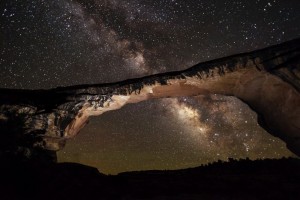 The Natural Bridges National Park in the southeast of Utah is a popular tourist destination. Its territory of about 3000 hectares includes three impressive natural bridges. Multicolored miraculous creations were created for several million years by the impact of strong water currents on limestone. The bridges have Indian names:
The Natural Bridges National Park in the southeast of Utah is a popular tourist destination. Its territory of about 3000 hectares includes three impressive natural bridges. Multicolored miraculous creations were created for several million years by the impact of strong water currents on limestone. The bridges have Indian names:
- Owachomo,
- Kachina
- and Sipapu, which is the second largest natural bridge in the world.
Around the monument there is a road from which you can see all the bridges at once. Nestled among rocks and canyons, Natural Bridges is considered the darkest natural park in the world. In addition, on the territory of the monument there are the ruins of the dwellings of the Indian tribe Anasazi, who lived in the II – I centuries BC. On some of them you can even consider the saved pictograms.
Interesting: At the disposal of travelers there is a beautiful tourist center with a wide range of services, including a comfortable camping.
Back
Place to visit number 8: Theater Tower
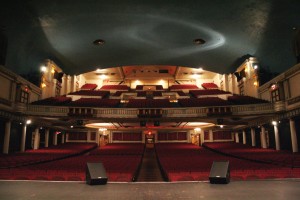 Theater Tower in Salt Lake City, Utah was opened in the summer of 1972. On this day, the first concert took place here, after which the theater received the highest ratings of reviewers.
Theater Tower in Salt Lake City, Utah was opened in the summer of 1972. On this day, the first concert took place here, after which the theater received the highest ratings of reviewers.
For several years, the Tower has gained a good reputation among artists and musicians. In the theater of the Tower in Salt Lake City there were celebrities such as:
- David Bowie,
- Bob Dylan,
- Bob Marley,
- Canne West,
- Janet Jackson,
- The Rolling Stones,
- U2,
- The Smiths and many others.
Interesting: Currently, the Theater Tower in Salt Lake City is a modern concert venue, equipped with the latest international standards. Thanks to this, a lot of concerts and shows take place here.
Back
Place to visit number 9: Dead Horse Point State Park
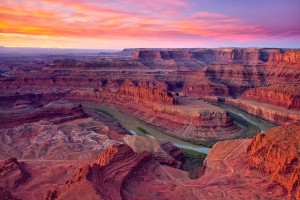 The Dead Horse Park rises above the valley of the Colorado River. The majestic panoramas of the canyon, formed as a result of complex geological processes, seem to take the traveler to another planet.
The Dead Horse Park rises above the valley of the Colorado River. The majestic panoramas of the canyon, formed as a result of complex geological processes, seem to take the traveler to another planet.
Particularly fascinating spectacle of the park is at sunset or at sunrise hours – so amazing its:
- stony plains,
- boundless dunes
- and plateaus.
It’s hardly possible for a person to create such incredible beauty – only the power of Nature is capable of such a miracle.
The Park of the Dead Horse is devoted to one curious and rather sad legend. It takes us to the pages of history, when the Colorado region began to assimilate the first settlers. At an altitude of 609 meters, there is a narrow isthmus resembling a bottle neck. Here they drove the mustangs and locked them with a hedge, in order to subsequently choose the best horse. And one day, when leaving, the cowboys forgot to open the enclosure, and the locked horses could not get out and were killed by thirst. So there was a name reminiscent of this sad story.
Interesting: In the XIX century, the territory of the future park of cowboys was used as a convenient natural trap for trapping wild horses.
Back
Place to visit number 10: The Black Dragon Canyon
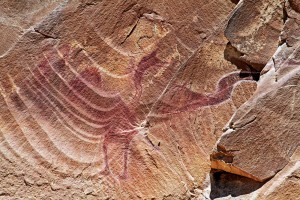 The Black Dragon Canyon is about 20 miles west of Green River, Utah. Ancient Indians left a lot of evidence of their location in these places, including campsites, stone barns, as well as works of art – painted (pictograms) and carved (petroglyphs) on the walls of the Canyon.
The Black Dragon Canyon is about 20 miles west of Green River, Utah. Ancient Indians left a lot of evidence of their location in these places, including campsites, stone barns, as well as works of art – painted (pictograms) and carved (petroglyphs) on the walls of the Canyon.
There is some evidence that these images were part of the ancient calendar system. The widely known petroglyph of the “winged monster” for a long time excited the minds of many cryptozoologists and creationists.
However, only thanks to new technologies of spectroscopy and computer image processing, they succeeded in finally deciphering it. It turned out that “pterodactyl” is not a single image, but a combination of five different half-stained drawings that do not touch each other:
- a large human figure with a tail and a head with two large eyes,
- a small human figure with arms outstretched,
- dogs,
- Sheep
- and Serpentine image.
Interesting: The canyon was named after one of the rock carvings, which resembles a large winged dragon or pterodactyl.
Back
Place to visit number 11: Park City
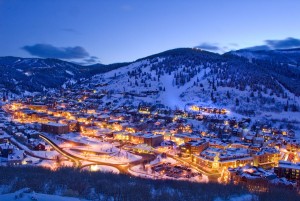 Park City is a city in the state of Utah, which is located in the mountains of Wasatch and Summit.
Park City is a city in the state of Utah, which is located in the mountains of Wasatch and Summit.
Some historical facts:
- It was founded in 1860 and was originally known as a settlement for miners.
- In 1936 the authorities decided to hold the first skiing festival here, for which the ski slopes and cottages for the guests of the event were built.
- Subsequently, in the 60s of the last century, the ski resort Deer Valley was created on the basis of the infrastructure elements created in the mountains. This saved the city’s economy from collapse and glorified it throughout the country.
Today Park City, a small town with a population of no more than 8 thousand people, is an attractive city for tourists, which is famous for its ski resorts, as well as the fact that an international Sundance film festival is held here annually in the Egyptian theater. Since tourists here are usually more than the local population, there are many hotels, cafes and shops.
Interesting: It is noteworthy that the names of many streets and institutions in Park City are associated with the miner’s craft.
Back
Place to visit number 12: Salt Lake Assembly Hall
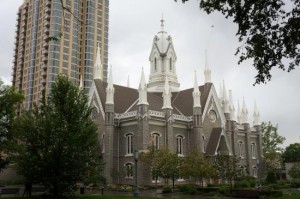 Salt Lake Assembly Hall is one of the most memorable buildings in Salt Lake City. Here, very often there are free concerts and exhibitions with the participation of world artists for everyone over eight.
Salt Lake Assembly Hall is one of the most memorable buildings in Salt Lake City. Here, very often there are free concerts and exhibitions with the participation of world artists for everyone over eight.
Salt Lake Assembly Hall was built in the Gothic style, between 1877-1882.
There are several reasons tourists like Assembly Hall:
- The architect chose granite as the main material for construction.
- The walls are cross-shaped, which makes the appearance of the hall similar to a small Gothic cathedral.
- But behind such a mysterious exterior there is a hall with an absolutely modern interior.
- All the spiers of the building were made of fiberglass, the benches were polished, painted the original murals depicting the Mormon prophets, and put the organ with 3,489 pipes.
Interesting: Salt Lake Assembly Hall had a lot of permanent restorations, the most extensive of which occurred from 1979 to 1983.
Back
Place to visit number 13: Kanab
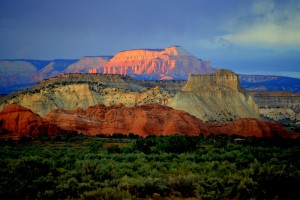 Kanab is a city in the south of Utah, right at the border with Arizona. Local residents consider it as the “Little Hollywood”, because the city itself and its surroundings have become a place for shooting many films.
Kanab is a city in the south of Utah, right at the border with Arizona. Local residents consider it as the “Little Hollywood”, because the city itself and its surroundings have become a place for shooting many films.
For the first time this area was inhabited in 1864, the city itself was founded in 1870 by ten Mormon families. At the moment, the city’s population is more than 4,400 people, of which more than 96% are white Americans. Fame to the
town was brought by a lot of films, mainly Westerns. For example, the streets and neighborhoods of Kanab can be seen in the films:
- The Lone Ranger,
- The Planet of the Apes (1968),
- El Dorado (1966),
- Stagecoach (1939) and many others.
Another feature of Kanab is its location between three national parks. From the town you can easily reach many popular sites, among which, there are such as the Grand Canyon, Bryce Canyon and the national monument Vermilion Cliffs.
Interesting: Also there are important objects nearby lakes, one of two places in the world where the dying species of snails Kanab ambersnail lives.
Back
Place to visit number 14: The Dixie National Forest
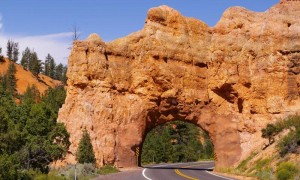 The Dixie National Forest extends for 270 kilometers in the south of Utah, and has an area of nearly 8,000 square kilometers. The territory of the reserve is characterized by surprisingly diverse landscapes. The reserve was formed in 1905, in 1907 it received the status of national. Its value lies not only in the location, due to which it covers several geographical zones, but also in the numerous petroglyphs, pictograms and other evidence of the activity of the first inhabitants of this land preserved on its territory. The territory of the Dixie Reserve covers four geographic areas, differing in their biological diversity and climatic features:
The Dixie National Forest extends for 270 kilometers in the south of Utah, and has an area of nearly 8,000 square kilometers. The territory of the reserve is characterized by surprisingly diverse landscapes. The reserve was formed in 1905, in 1907 it received the status of national. Its value lies not only in the location, due to which it covers several geographical zones, but also in the numerous petroglyphs, pictograms and other evidence of the activity of the first inhabitants of this land preserved on its territory. The territory of the Dixie Reserve covers four geographic areas, differing in their biological diversity and climatic features:
- sloping hills covered with dense coniferous forests,
- adjoining mountains up to 3400 meters high, dotted with hundreds of small lakes,
- special beauty is given to the local landscapes by rivers, above which rise steep canyon walls of different colors – from pale to bright red, rich in bizarre rock formations.
Interesting: Such breathtaking scenery creates an unrivaled atmosphere for recreation, as if active, like riding quad biking, mountain biking or horse riding, or pacifying – fishing, hiking and camping.
Back
Place to visit number 15: The Museum of Fine Arts
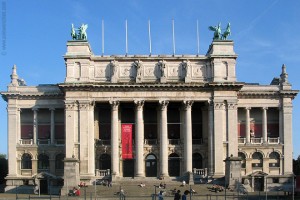 The Museum of Fine Arts is the main cultural center of the state, designed to showcase works of both modern and centuries-old history. The museum’s
The Museum of Fine Arts is the main cultural center of the state, designed to showcase works of both modern and centuries-old history. The museum’s
concept is a constantly changing exposition. This makes it possible to display works from both their own fund and from collections of other museums. The date of birth of the museum can be considered 1900, when on the top floor of the university building there were three rooms for paintings by local artists. For almost a hundred years of its existence, the collection has grown to nineteen thousand pieces. Today they are housed in a new building, opened in June 2001 on the campus of the University of Utah. The collection includes works by contemporary:
- European,
- Asian,
- American artists.
Along with them, the art of the ancient world is represented.
Interesting: The oldest exhibit of the museum is 5200 years old.
Back